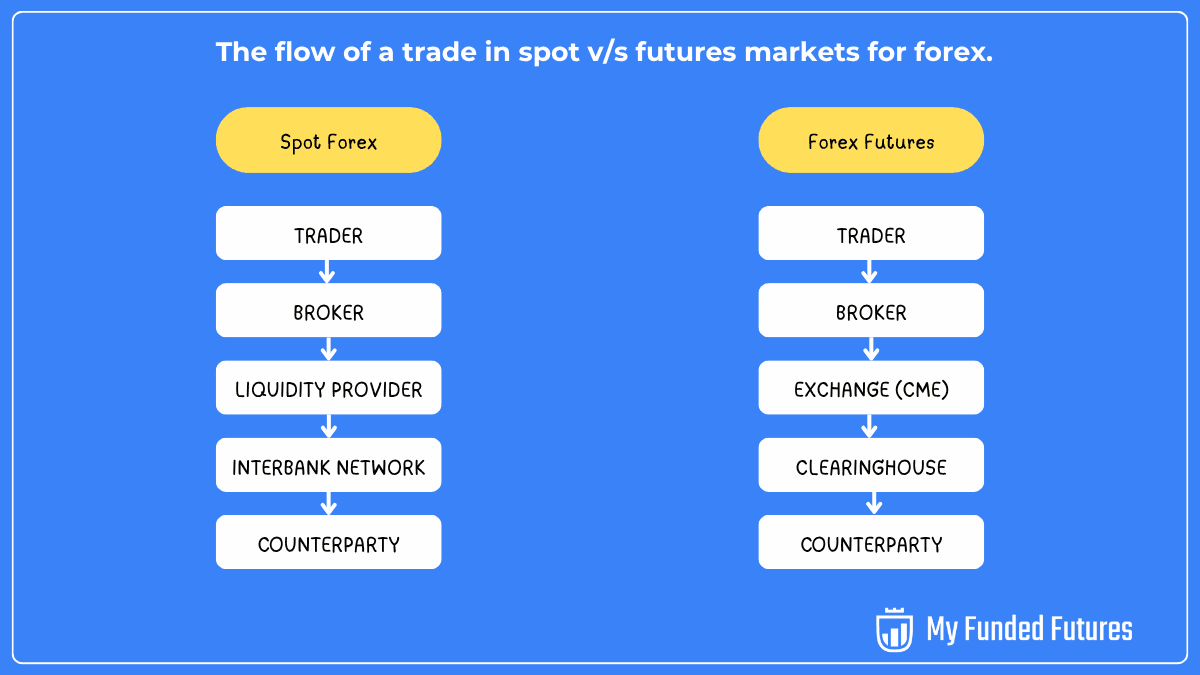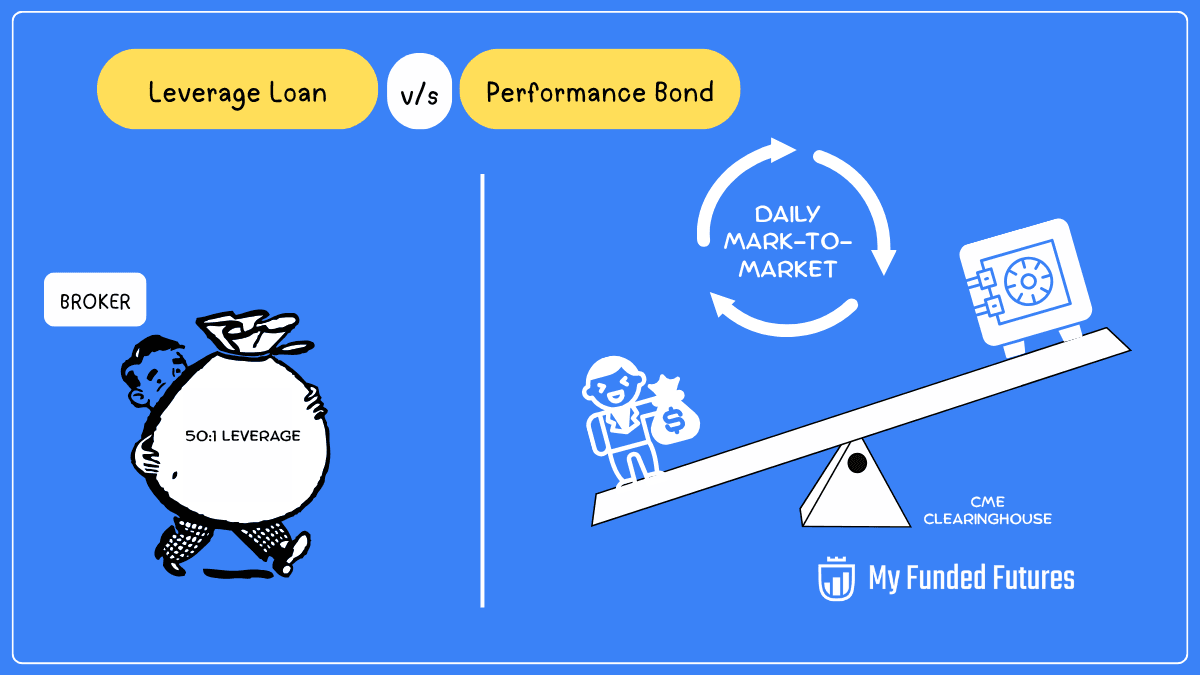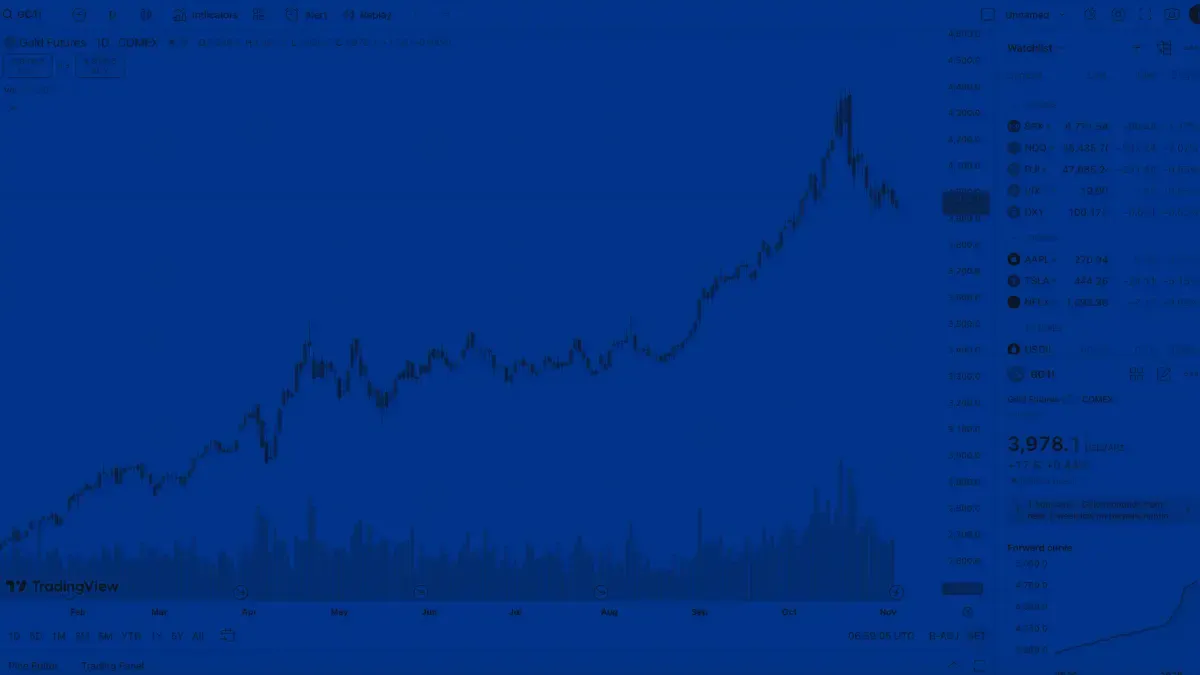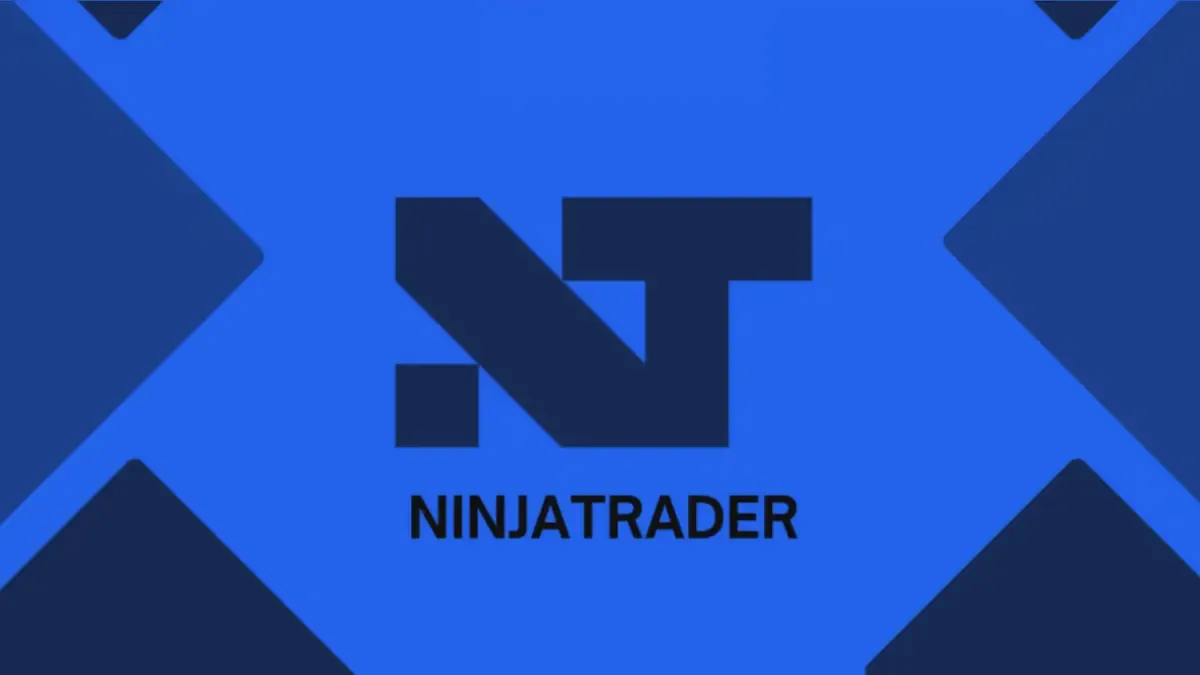Forex trading comes in two distinct forms: spot forex and forex futures. Both let you speculate on currency movements, but they operate through completely different market structures with different risk profiles, costs, and execution mechanics. Knowing those differences helps you choose the right market for your goals and trading style.
Most retail traders begin with spot forex because the barriers to entry are low and marketing from brokers makes it seem simple. Futures traders, particularly those in prop firm environments, work almost exclusively with forex futures because of transparency, regulation, and the precision these contracts offer.
Here’s how they compare and which might be a better fit for you.
What Is Spot Forex?
Spot forex is a decentralized, over-the-counter market where currencies are traded directly between participants, typically through brokers or banks. When you buy EUR/USD in the spot market, you are agreeing to exchange euros for dollars at the current market rate, with settlement happening within two business days. In practice, most retail spot forex traders never take delivery of actual currency. Instead, positions are rolled over automatically each day, and profits or losses are realized when the position is closed.

The spot forex market operates 24 hours a day during the week, starting Sunday evening in North America and running through Friday afternoon. This continuous trading happens because the market shifts across time zones, from Sydney to Tokyo to London to New York. There is no central exchange. Instead, liquidity comes from a global network of banks, brokers, and market makers who quote prices and facilitate trades.
Spot forex offers massive leverage, often 50:1 or higher depending on your jurisdiction and broker. A trader with $1,000 can control $50,000 worth of currency with that leverage. This amplifies both gains and losses, which is why spot forex attracts aggressive speculators but also leads to rapid account blowouts for those without strict risk management.
The appeal of spot forex is accessibility. You can open an account with a few hundred dollars, start trading immediately, and access tight spreads on major pairs like EUR/USD or GBP/USD. The downside is opacity. Because there is no centralized exchange, you cannot see true market depth or volume. Your broker is often your counterparty, and in some cases, brokers profit when you lose. Not all brokers operate this way, but the structure creates potential conflicts of interest that do not exist in exchange-traded markets.
What Are Forex Futures?
Forex futures are standardized contracts traded on regulated exchanges like the Chicago Mercantile Exchange (CME). Each contract obligates the buyer and seller to exchange a specific amount of one currency for another at a predetermined price on a set expiration date. These contracts have fixed sizes, expiration months, and transparent pricing because they trade on a central order book visible to all participants.
For example, the 6E contract (EUR/USD futures) on the CME represents 125,000 euros. If you buy one 6E contract at 1.1000, you are agreeing to exchange 125,000 euros for dollars at that rate when the contract settles. Most traders never hold to expiration. Instead, they close the position before settlement to capture profit or cut a loss, just like with spot forex. The difference is that every trade happens on an exchange where price, volume, and order flow are fully transparent.
Forex futures trade nearly 24 hours a day on the CME Globex platform, starting Sunday evening and running through Friday afternoon, similar to spot forex. Unlike spot forex, futures have defined expiration dates, typically quarterly (March, June, September, December). Traders roll positions from one contract to the next as expiration approaches, which adds a step but also creates predictable calendar events around which liquidity and volatility shift.
Futures require margin, but it works differently than spot forex leverage. When you trade futures, you post an initial margin deposit, often 3% to 10% of the contract's notional value, depending on the broker and the contract. This margin acts as a performance bond rather than a loan. You are not borrowing money to control a larger position. You are posting collateral to ensure you can cover potential losses. Gains and losses are settled daily through a process called mark-to-market, meaning your account balance adjusts every day based on the contract's closing price.
The advantage of forex futures is transparency and fairness. Every participant, from retail traders to institutional hedgers, sees the same order book and trades at the same prices. There are no hidden spreads or requotes. Execution is direct, and your broker is not your counterparty. The exchange matches buyers and sellers, and the clearinghouse guarantees each side of the trade, eliminating counterparty risk.
Key Differences Between Spot Forex and Forex Futures
| Aspect | Spot Forex | Forex Futures |
|---|---|---|
| Market Structure | Decentralized, over-the-counter | Centralized exchange (CME) |
| Regulation | Varies by broker and jurisdiction | Heavily regulated by CFTC and NFA |
| Transparency | No centralized order book; limited visibility | Full transparency of order flow and volume |
| Contract Standardization | Flexible lot sizes (micro, mini, standard) | Fixed contract sizes (e.g., 125,000 EUR) |
| Counterparty | Your broker (often acts as market maker) | Clearinghouse guarantees trades |
| Leverage | High (50:1 or more) | Lower (margin-based, typically 3-10%) |
| Trading Hours | 24/5, Sunday evening to Friday afternoon | 24/5 on CME Globex, nearly identical hours |
| Costs | Spread-based (varies by broker) | Commission per contract, tight spreads |
| Expiration | No expiration (positions roll daily) | Quarterly expiration; traders must roll positions |
| Volume Data | Not available (decentralized market) | Real-time volume and open interest on exchange |
Regulation and Transparency
Spot forex operates in a lightly regulated environment compared to futures. In the U.S., spot forex brokers must register with the National Futures Association (NFA) and comply with Commodity Futures Trading Commission (CFTC) rules, but enforcement varies and offshore brokers often operate under looser standards. Outside the U.S., regulation is inconsistent. Some brokers are well-regulated by authorities like the Financial Conduct Authority (FCA) in the UK or the Australian Securities and Investments Commission (ASIC), while others operate in jurisdictions with minimal oversight.
This regulatory patchwork creates risk. Traders have reported issues with requotes, stop hunting, and withdrawal delays at poorly regulated brokers. Because the market is decentralized, there is no public record of trades or volume, making it difficult to verify whether you received fair execution.
Forex futures are regulated by the CFTC in the U.S., with oversight by the NFA. Trades happen on the CME, a transparent exchange where every order is visible and every execution is recorded. This structure eliminates the possibility of broker manipulation. Your order goes to the exchange, matches with another trader's order, and the clearinghouse steps in to guarantee both sides. If your broker fails, your positions remain protected because they are held at the exchange level, not with the broker.
For traders who value transparency and want to avoid conflicts of interest, futures offer clear advantages. You see real volume, real order flow, and real market depth. There are no hidden spreads or artificial requotes. This is why institutional traders and prop firms overwhelmingly prefer futures.
Costs and Execution
Spot forex brokers typically charge through the spread, which is the difference between the bid and ask price. Major pairs like EUR/USD often have spreads as low as 0.1 to 1 pip, depending on the broker and market conditions. During volatile periods or news events, spreads can widen significantly, sometimes by several pips, increasing your trading cost without warning. Some brokers also charge commissions on top of spreads, particularly those offering "ECN" or "raw spread" accounts.
The challenge with spread-based pricing is that it is variable and opaque. You do not always know what you will pay until the trade executes, and in fast markets, slippage and spread widening can turn a seemingly low-cost trade into an expensive one.
Forex futures charge a fixed commission per contract, typically between $1 and $5 round-turn depending on your broker. The spread is tight and stable because the exchange matches orders directly. During normal market conditions, the bid-ask spread on liquid contracts like 6E (EUR/USD) is often just one tick, equivalent to $12.50 per contract. You know your cost upfront, and it does not change based on market conditions.
This predictability matters when you are trading frequently or managing multiple positions. A spot forex trader might face unpredictable costs during volatile sessions, while a futures trader pays the same commission regardless of volatility. Over time, this consistency in execution costs adds up, particularly for active traders.
Leverage and Margin
Spot forex leverage is straightforward but potentially dangerous. If your broker offers 50:1 leverage, a $1,000 account can control $50,000 worth of currency. This sounds appealing until you realize that a 2% adverse move wipes out your entire account. High leverage magnifies mistakes, and many new traders blow up their accounts within weeks because they underestimate how quickly losses accumulate.

Futures margin works differently. When you trade a 6E contract worth roughly $137,500 (at 1.1000), your broker might require an initial margin of $3,000 to $5,000. But remember, this is not leverage in the traditional sense. You are posting collateral to cover potential daily losses, and the exchange marks your position to market every day. If the contract moves against you and your account balance falls below the maintenance margin, you receive a margin call and must add funds or close the position.
This system forces discipline. You cannot ignore a losing position because the exchange will close it for you if you do not maintain sufficient margin. Spot forex accounts, by contrast, often allow traders to hold losing positions until they blow up completely, which is why account wipeouts are more common in spot forex than in futures.
Volume and Order Flow
Spot forex has no centralized volume data. Some brokers provide tick volume, which counts the number of price changes rather than actual contracts traded, but this is not true volume. You cannot see how much currency is being bought or sold, and you cannot analyze order flow or market depth. This limitation makes it harder to gauge real supply and demand or confirm breakouts and reversals.

Forex futures provide real-time volume and open interest data because every trade happens on the CME. You can see how many contracts traded at each price level, watch volume spikes during key moves, and analyze order flow using tools like footprint charts or volume profiles. This data reveals whether a breakout has real participation or if it is just a few large orders moving the market temporarily.
Dig deeper: What is Volume Analysis and Why it Matters for Futures Trading
For traders who rely on volume analysis or order flow strategies, futures are the only viable option. Spot forex simply does not provide the data needed to trade this way.
Which Should You Trade?
Choosing between spot forex and forex futures depends on your goals and the environment in which you plan to trade.
Spot forex works for independent retail traders who want low barriers to entry, flexible position sizes, and access to high leverage. If you have a small account and want to trade micro lots or experiment with currency pairs without committing significant capital, spot forex is accessible. However, you must accept the trade-offs: limited transparency, variable execution costs, and the risk of trading against your broker.
Forex futures are better suited for traders who value transparency, fair execution, and access to real market data. The fixed contract sizes require more capital upfront, but the benefits are clear. You trade on a regulated exchange, see actual volume and order flow, and avoid conflicts of interest with your broker. Futures also offer a more disciplined risk environment because the daily mark-to-market process and margin calls force you to manage positions actively.
For traders pursuing funded accounts through prop firms, futures are almost always the better choice. Most prop firms evaluate traders using futures platforms because futures provide standardized contracts, transparent execution, and the risk controls needed to manage funded capital responsibly. The skills you develop trading forex futures translate directly to other futures markets like indices, bonds, or commodities, making you a more versatile trader.
If you plan to trade independently with your own capital and prefer the flexibility of smaller position sizes, spot forex can work, but you must choose a well-regulated broker and understand the limitations of the market structure. If you want to get funded, scale your trading, or develop skills that transfer across markets, futures offer a clearer path.
Final Thoughts
Spot forex and forex futures both allow you to trade currency movements, but the markets operate under completely different structures. Spot forex is decentralized, lightly regulated, and accessible, making it popular with retail traders who want low entry costs and high leverage. Forex futures are centralized, transparent, and exchange-traded, offering better execution, real volume data, and a more disciplined trading environment.
Neither market is inherently better, but one will fit your goals and trading style more than the other. If transparency, fair execution, and the ability to analyze real order flow matter to you, futures are the better choice. If you want to start small and experiment with minimal capital, spot forex offers accessibility, but you must be aware of the risks and limitations.
Most serious traders eventually migrate toward futures once they understand the advantages, particularly if they aim to trade professionally or join a prop firm. The structure, regulation, and transparency of futures create a fairer playing field where your edge comes from skill rather than luck or broker behavior.
This material is provided for educational purposes only and should not be relied upon as trading, investment, tax, or legal advice. All participation in MyFundedFutures (MFFU) programs is conducted in a simulated environment only; no actual futures trading takes place. Performance in simulated accounts is not indicative of future results, and there is no guarantee of profits or success. Fewer than 1% of participants progress to a live-capital stage with an affiliated proprietary trading firm. Participation is at all times subject to the Simulated Trader Agreement and program rules.
Rate this article
Related Posts
Read our most popular posts
5 Best Prop Firms With TradingView Integration
TradingView's powerful charting tools and real-time data make it a favorite among futures traders, but not every prop firm lets you trade directly from your charts. We've identified five firms that offer true TradingView integration, making it easy to analyze, execute, and scale without switching platforms.
What Is MyFundedFutures Scale Account and Is It The Right Plan For You?
The MyFundedFutures Scale Account is a middle-tier evaluation plan that balances affordability with growth potential. The scale plan offers weekly payout opportunities with increasing withdrawal limits, no daily loss cap, and a clear path to live funding after just five consecutive payouts.
5 Best Prop Firms With NinjaTrader Integration
NinjaTrader's advanced charting and precision execution tools make it a top choice for active futures traders, but not every prop firm integrates it smoothly. We'll highlight five firms that support true NinjaTrader compatibility, how their setups compare, and which one gives you the most stable, consistent path from evaluation to funded account.


